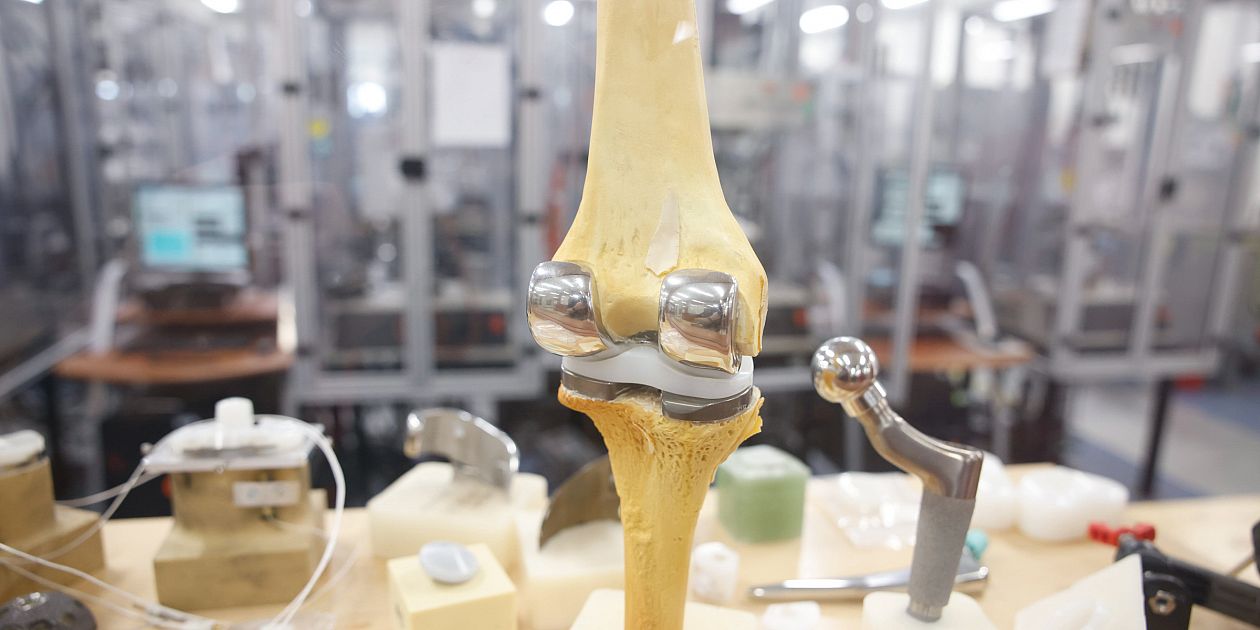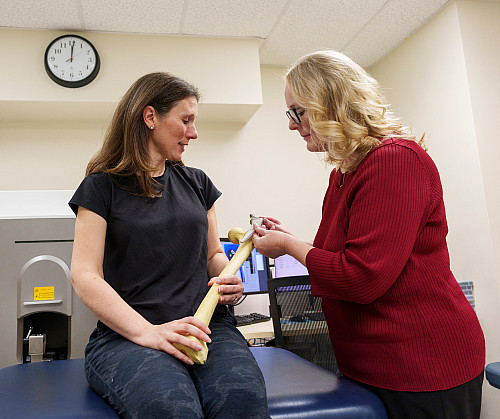Joint venture to deliver up to 1 GW of AI infrastructure by 2030, starting with a 100 MW deployment in the Kingdom of Saudi Arabia to power the Global AI ecosystem with cost-efficient, high-performance infrastructure
News Summary
- AMD, Cisco and HUMAIN to invest in a joint venture and serve as its exclusive technology partners, deepening their multi-year strategic collaboration announced in May during U.S. President Donald J. Trump’s visit to the Kingdom of Saudi Arabia.
- The joint venture plans to deploy up to 1 GW of AI infrastructure by 2030, with the shared ambition to expand capacity to multiple gigawatts, as a key pillar of HUMAIN’s overall ambitions.
- This joint venture is expected to begin operations in 2026, with a phase 1 deployment of 100 MW planned, powered by HUMAIN modern data center capacity, AMD Instinct™ MI450 Series GPUs and Cisco critical infrastructure solutions.
WASHINGTON, D.C. – November 19, 2025 – AMD, Cisco and HUMAIN, a PIF company delivering global full-stack AI solutions, announced today plans to establish a joint venture aimed to support the development of Saudi Arabia’s position as a leading provider of world-class AI solutions for regional and global customers.
AMD, Cisco and HUMAIN will serve as founding investors in the joint venture, which is expected to begin operations in 2026 with plans to combine HUMAIN’s state-of-the-art data centers with AMD and Cisco technology, delivering modern data center capacity with efficient power and lower capital expenditures. AMD and Cisco will act as exclusive technology partners to the joint venture, contributing their portfolio of products and services to its development of up to 1 GW of AI infrastructure by 2030.
The companies also announced the first phase of the project as a buildout of 100 MW AI infrastructure, with the intent to include HUMAIN modern data center capacity, AMD Instinct™ MI450 Series GPUs and Cisco’s industry-leading critical infrastructure.
Powering the Kingdom of Saudi Arabia’s AI Driven Economy
Earlier this year, Cisco and AMD announced a landmark initiative with HUMAIN to help build the world’s most open, scalable, resilient and cost-efficient AI infrastructure. Today’s announcement advances this partnership with plans for a joint venture to accelerate transformation and provide cost-effective infrastructure to power customers’ AI use cases.
Dr. Lisa Su, Chair and CEO of AMD, said: “Delivering high-performance global AI infrastructure at scale requires strong partnerships. Together with HUMAIN and Cisco, we’re combining leadership compute and networking technologies to expand the capacity and global competitiveness of the Kingdom’s AI ecosystem. As part of this deepening collaboration, we’re also establishing an AMD Center of Excellence in Saudi Arabia to further accelerate local integration and innovation.”
Chuck Robbins, Chair and CEO of Cisco said: “Our expanded partnership with HUMAIN, together with AMD, will mark a pivotal moment in accelerating Saudi Arabia’s AI infrastructure. By providing secure, scalable, critical infrastructure for HUMAIN’s up to 1 GW buildout, Cisco will help the Kingdom turn its vision for a digitally advanced, AI-powered economy into a reality.”
Tareq Amin, CEO of HUMAIN said: “Our partnership with AMD and Cisco brings world-class technology and expertise to our mission. Together, we are pushing the frontier of AI compute, bringing up to 1 GW of high-performance, cost-efficient infrastructure online in the Kingdom of Saudi Arabia to empower innovators both in the Kingdom and around the world.”
The collaboration reflects the ambition to create a dynamic, AI-driven economy. Cisco’s latest AI Readiness Index shows that while 91% of Saudi organizations plan to deploy AI agents, only 29% currently have robust GPU capacity, highlighting the urgent need for advanced data center infrastructure.
These findings point to an urgent need for the scalable, high-performance AI infrastructure which AMD, Cisco and HUMAIN are building together. The collaboration is not only expected to deliver the compute capacity required for AI at scale but also strengthens the foundations of Saudi Arabia’s digital economy, supporting goals to localize innovation, talent, and technology.
About AMD
For more than 55 years AMD has driven innovation in high-performance computing, graphics and visualization technologies. Billions of people, leading Fortune 500 businesses and cutting-edge scientific research institutions around the world rely on AMD technology daily to improve how they live, work and play. AMD employees are focused on building leadership high-performance and adaptive products that push the boundaries of what is possible. For more information about how AMD is enabling today and inspiring tomorrow, visit the AMD (NASDAQ: AMD) website, blog, LinkedIn, Facebook and X pages.
AMD Cautionary Statement
This press release contains forward-looking statements concerning Advanced Micro Devices, Inc. (AMD) such as, the expected timing and formation of the joint venture, AMD’s and the joint venture’s expected future plans, benefits, strategies, and performance; the expected benefits from the collaboration among the parties; the expected benefits from the establishment of the AMD Center of Excellence in Saudi Arabia; and the features, functionality, performance, availability, timing and expected benefits of future AMD products, which are made pursuant to the Safe Harbor provisions of the Private Securities Litigation Reform Act of 1995. Forward-looking statements are commonly identified by words such as “would,” “may,” “expects,” “believes,” “plans,” “intends,” “projects” and other terms with similar meaning. Investors are cautioned that the forward-looking statements in this press release are based on current beliefs, assumptions and expectations, speak only as of the date of this press release and involve risks and uncertainties that could cause actual results to differ materially from current expectations. Such statements are subject to certain known and unknown risks and uncertainties, many of which are difficult to predict and generally beyond AMD’s control, that could cause actual results and other future events to differ materially from those expressed in, or implied or projected by, the forward-looking information and statements. Material factors that could cause actual results to differ materially from current expectations include, without limitation, the following: impact of government actions and regulations such as export regulations, import tariffs, trade protection measures and licensing requirements; competitive markets in which AMD’s products are sold; the cyclical nature of the semiconductor industry; market conditions of the industries in which AMD products are sold; AMD’s ability to introduce products on a timely basis with expected features and performance levels; loss of a significant customer; economic and market uncertainty; quarterly and seasonal sales patterns; AMD’s ability to adequately protect its technology or other intellectual property; unfavorable currency exchange rate fluctuations; ability of third party manufacturers to manufacture AMD’s products on a timely basis in sufficient quantities and using competitive technologies; availability of essential equipment, materials, substrates or manufacturing processes; ability to achieve expected manufacturing yields for AMD’s products; AMD’s ability to generate revenue from its semi-custom SoC products; potential security vulnerabilities; potential security incidents including IT outages, data loss, data breaches and cyberattacks; uncertainties involving the ordering and shipment of AMD’s products; AMD’s reliance on third-party intellectual property to design and introduce new products; AMD’s reliance on third-party companies for design, manufacture and supply of motherboards, software, memory and other computer platform components; AMD’s reliance on Microsoft and other software vendors’ support to design and develop software to run on AMD’s products; AMD’s reliance on third-party distributors and add-in-board partners; impact of modification or interruption of AMD’s internal business processes and information systems; compatibility of AMD’s products with some or all industry-standard software and hardware; costs related to defective products; efficiency of AMD’s supply chain; AMD’s ability to rely on third party supply-chain logistics functions; AMD’s ability to effectively control sales of its products on the gray market; impact of climate change on AMD’s business; AMD’s ability to realize its deferred tax assets; potential tax liabilities; current and future claims and litigation; impact of environmental laws, conflict minerals related provisions and other laws or regulations; evolving expectations from governments, investors, customers and other stakeholders regarding corporate responsibility matters; issues related to the responsible use of AI; restrictions imposed by agreements governing AMD’s notes, the guarantees of Xilinx’s notes and the revolving credit agreement; impact of acquisitions, joint ventures and/or strategic investments on AMD’s business and AMD’s ability to integrate acquired businesses, including ZT Systems; impact of any impairment of the combined company’s assets; political, legal and economic risks and natural disasters; future impairments of technology license purchases; AMD’s ability to attract and retain key employees; and AMD’s stock price volatility. Investors are urged to review in detail the risks and uncertainties in AMD’s Securities and Exchange Commission filings, including but not limited to AMD’s most recent reports on Forms 10-K and 10-Q.
About Cisco
Cisco (NASDAQ: CSCO) is the worldwide technology leader that is revolutionizing the way organizations connect and protect in the AI era. For more than 40 years, Cisco has securely connected the world. With its industry-leading AI-powered solutions and services, Cisco enables its customers, partners, and communities to unlock innovation, enhance productivity, and strengthen digital resilience. With purpose at its core, Cisco remains committed to creating a more connected and inclusive future for all.
Discover more on The Newsroom and follow us on X at @Cisco.
Cisco Forward-Looking Statements
This press release may be deemed to contain forward-looking statements, which are subject to the safe harbor provisions of the Private Securities Litigation Reform Act of 1995. These statements include, among others, statements regarding Cisco’s or the joint venture’s future business performance, strategies, or expectations, including the anticipated timing, consummation and expected benefits of the joint venture. Readers are cautioned that these forward-looking statements are only predictions and may differ materially from actual future events or results due to a variety of factors, including, among other things, the ability of Cisco or the joint venture to achieve expected benefits of their investments, business and economic conditions and growth trends, increased competition, global economic conditions and uncertainties in the geopolitical environment and other risk factors set forth in Cisco’s most recent reports on Form 10-K and 10-Q, respectively. Any forward-looking statements in this release are based on limited information currently available to Cisco, which is subject to change, and Cisco will not necessarily update the information.
About HUMAIN
HUMAIN, a PIF company, is a global artificial intelligence company delivering full-stack AI capabilities across four core areas: next-generation data centers, hyper-performance infrastructure & cloud platforms, advanced AI Models, including the world’s most advanced Arabic LLMs built in the Arab world, and transformative AI Solutions that combine deep sector insight with real-world execution.
HUMAIN’s end-to-end model serves both public and private sector organizations, unlocking exponential value across all industries, driving transformation and strengthening capabilities through human-AI synergies. With a growing portfolio of sector-specific AI products and a core mission to drive IP leadership and talent supremacy world-wide, HUMAIN is engineered for global competitiveness and national distinction.
www.humain.com
Forward-Looking Statement
This press release contains forward-looking statements based on current expectations and assumptions. Actual results may differ materially due to uncertainties. HUMAIN undertakes no obligation to update these statements.
www.humain.com
Press contact
Hana Nemec, HUMAIN
pr@humain.com














